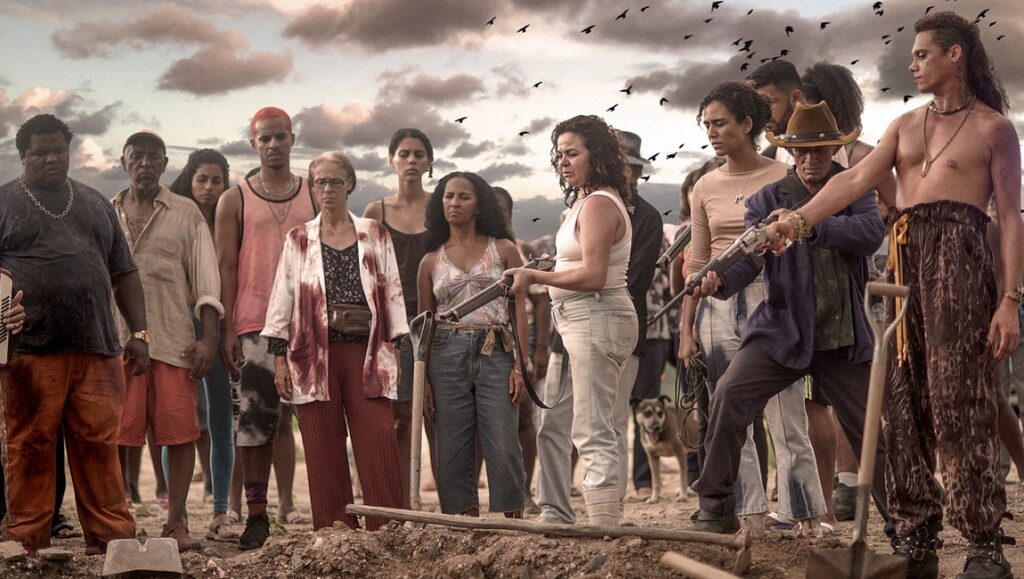Bacurau‘s initial promise of a raucous genre celebration ultimately devolves into a shallow approximation of those pleasures.
There’s an undeniable sensuousness to the surfaces of Bacurau: from the music choices (including a John Carpenter composition, speaking volumes to the film’s influences), to the mixture of genres, and the various twists and diversions that the film takes, cinephiles, especially, will appreciate what Kleber Mendonça Filho and Juliano Dornelles are up to here. Bacurau takes place in the titular small Brazilian village; the matriarch of the community has just passed, and her funeral and wake provide an opportunity to see the people grieve together. We’re introduced to many of the characters at this point, including Domingas (Sónia Braga), who throws a passionate, drunken tantrum about the recently deceased. Later, this small town suffers through a series of strange problems: the town itself disappears from satellite maps, the internet and phone signals become spotty, the truck that brings clean water gets shot at, and some nearby farmers are found dead in a bloody massacre.
Bacurau halfway introduces the element of chaos: a group of foreign paramilitary forces, led by a general played by Udo Kier, are slowly destabilizing this village, for reasons that aren’t immediately clear. These plot points serve to constantly shift things around, especially in the second half of Bacurau, setting up some fantastic sequences of strategic violence, and even touching on political talking points. But whenever the film focuses on the outsiders, instead of the villagers, any richness and uniqueness deflates, as the filmmakers succumb to the exact clichés that one would expect, and write derivative dialogue sequences that seem to be transplanted from this film’s influences. There’s a singular universe in Bacurau, the village, and the interruption of “the villains” of this story impedes its construction and depth, hindering what at first feels like a unique genre film that’s rich in local color.
Published as part of March 2020’s Before We Vanish.


Comments are closed.